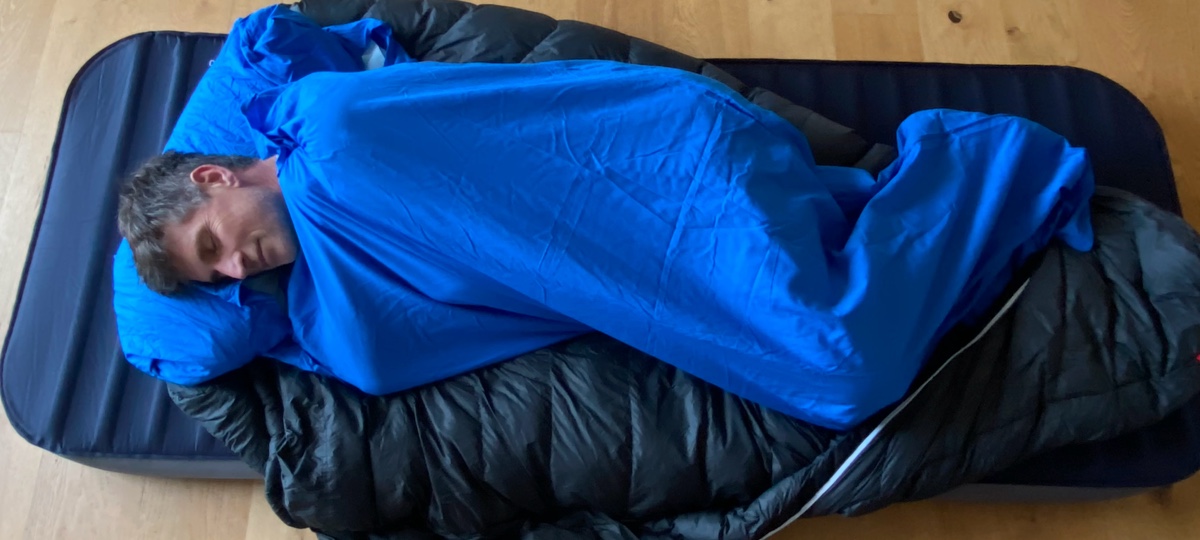Advnture Verdict
Well made, with inbuilt anti-pong properties to reduce laundering duties and a pillowcase incorporated into the design to offer 100% cover, this sleeping bag liner has something to offer in all seasons and scenarios. It’s great in summer, as a cool lightweight sheet to use on its own, and it amps up the temperature rating on all kinds of sleeping bags in colder months. It’s also perfect for use in mountain huts when you’re hiking, and hostels when you’re traveling. Available in rectangle and mummy shapes, and with a great stuff sack supplied, it’s a really solid choice for those looking for a multi-functional travel sheet or sleeping bag liner.
Pros
- +
Comfortable and warm to slip into
- +
Available to suit mummy and rectangular sleeping bags
- +
Inbuilt odor control
- +
Integrated pillow sleeve
- +
Easy to wash
- +
Neat packing case
Cons
- -
Loses all thermal properties when damp
- -
One size only
- -
Not the lightest
- -
Non-organic, dyed cotton used
- -
Less smooth than silk liners
- -
No color choice
You can trust Advnture
Meet the reviewer
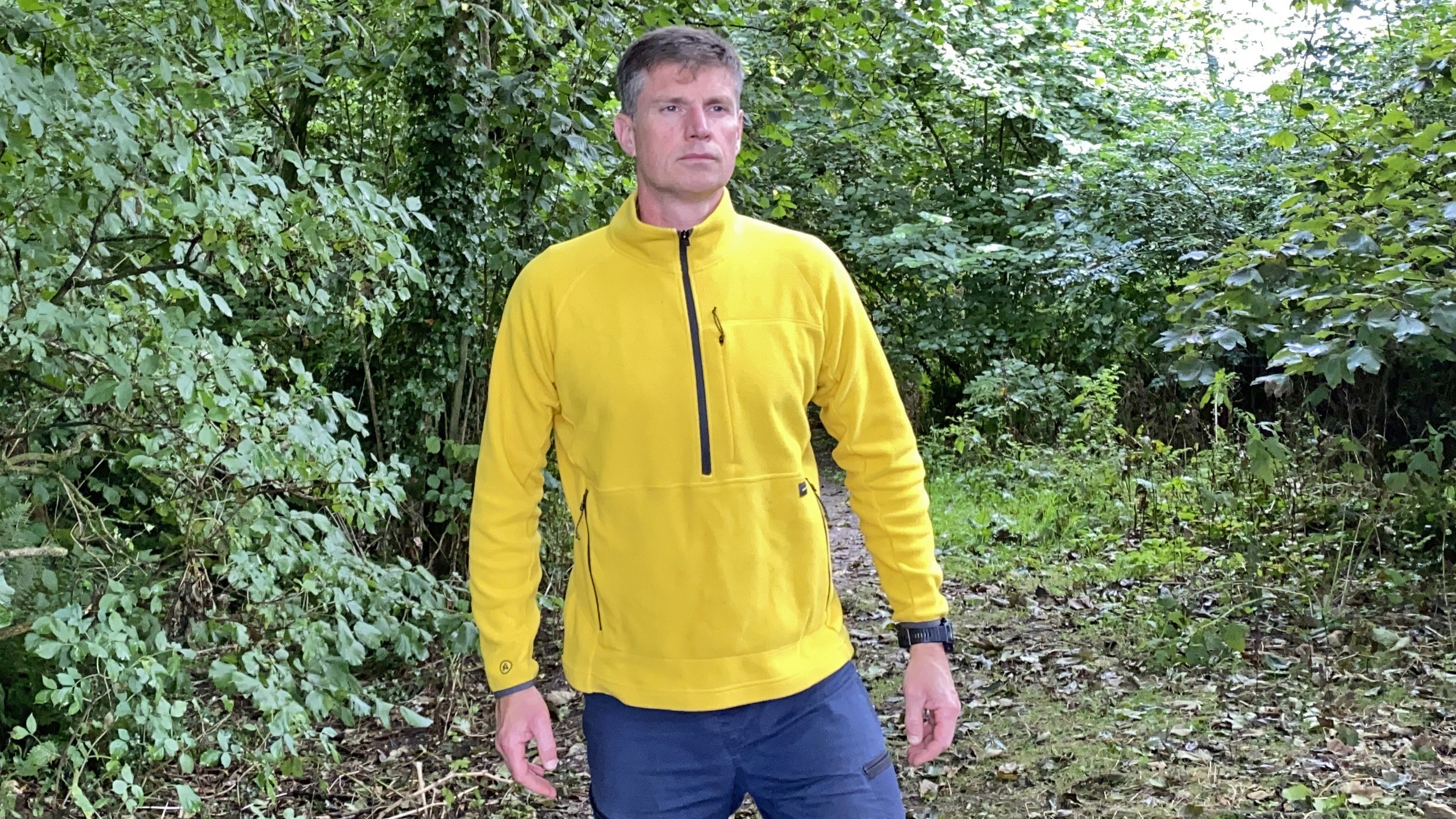
Pat has hiked all over the world, his adventures taking him to Mont Blanc, the roof of Western Europe; the Norwegian Alps; the highest peaks in Australia; and New Zealand’s Great Walks – among others. He’s also an experienced tester of running gear, and gives kit a thorough thrashing before reviewing.
Lifeventure Cotton Sleeping Bag Liner: first impressions
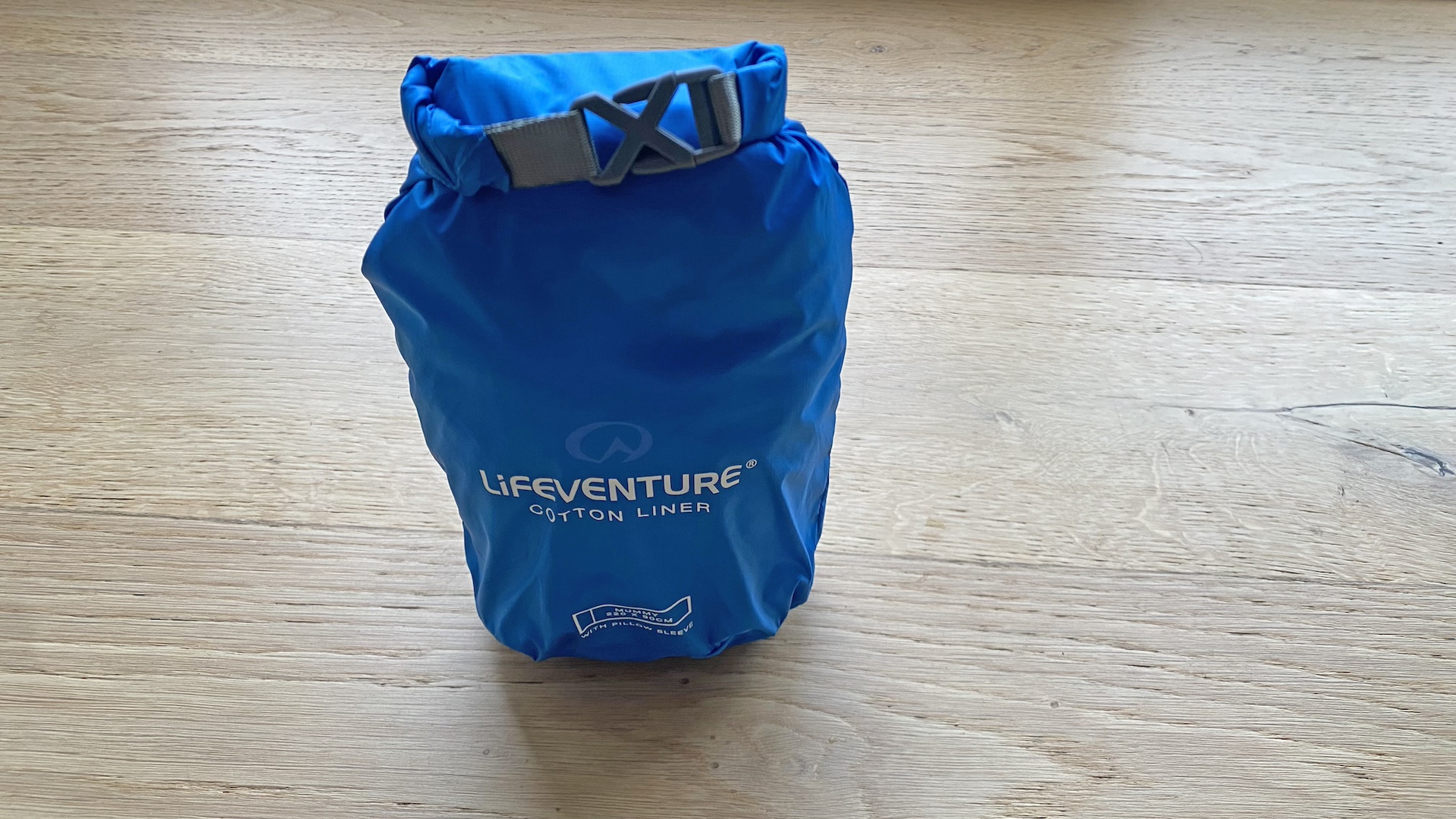
A good sleeping bag liner is far more than a mere adventure accessory or a little luxury. Used correctly these seemingly simple pieces of kit have myriad applications. They can vastly improve your levels of comfort while camping, by effectively upping the temperature rating of your 2-season or 3-season sleeping bag in the colder months (and reducing the amount of times you need to wash your down bags), or by working as a stand-alone cover in the height of summer. And when you’re staying in alpine huts or traveling internationally, they can be an absolutely essential (many huts and hostels insist you use them).
• List price: $35 (US) / £27 (UK)
• Weight: 360g / 12.7oz
• Pack size: Mummy: 180mm x 110mm x 80mm / 7in x 4.3in x 3.1in; Rectangular: 180mm x 125mm x 95mm / 7in x 4.9in x 3.7in
• Unpacked size: Mummy: 220cm x 90cm-56cm / 86.5in x 34.5in–22in; Rectangular: 220cm x 90cm / 86.5in x 34.5in
• Material: 100% cotton treated with Polygiene
• Shape: Mummy or Rectangular
• Color: Blue
• Compatibility: Camping, hut hiking and traveling
However, like everything you take camping with you, such a piece of kit has to earn its place in your hiking backpack by proving that it’s worth its weight and pack space. This cotton sleeping bag liner from British brand Lifeventure comes with its own stuff sack and, while it’s far from the lightest liner on the market, it’s very neat and easy to slide into any kind of bag, including a large daypack (which I often use for one-night escapades and hut-to-hut hikes).
When it first arrived I was impressed. With an inbuilt pillow sleeve and the fact that it’s been treated with Polygiene, it promised to be super useful in both camping and traveling situations. These features – coupled with a very accessible price tag – meant this liner looked like a piece of equipment well worth adding to my kit cupboard. But how would it perform in the field and on the road? I put it to the test while camping and traveling to find out how it compared to the best sleeping bag liners on the market.
Lifeventure Cotton Sleeping Bag Liner: design & materials
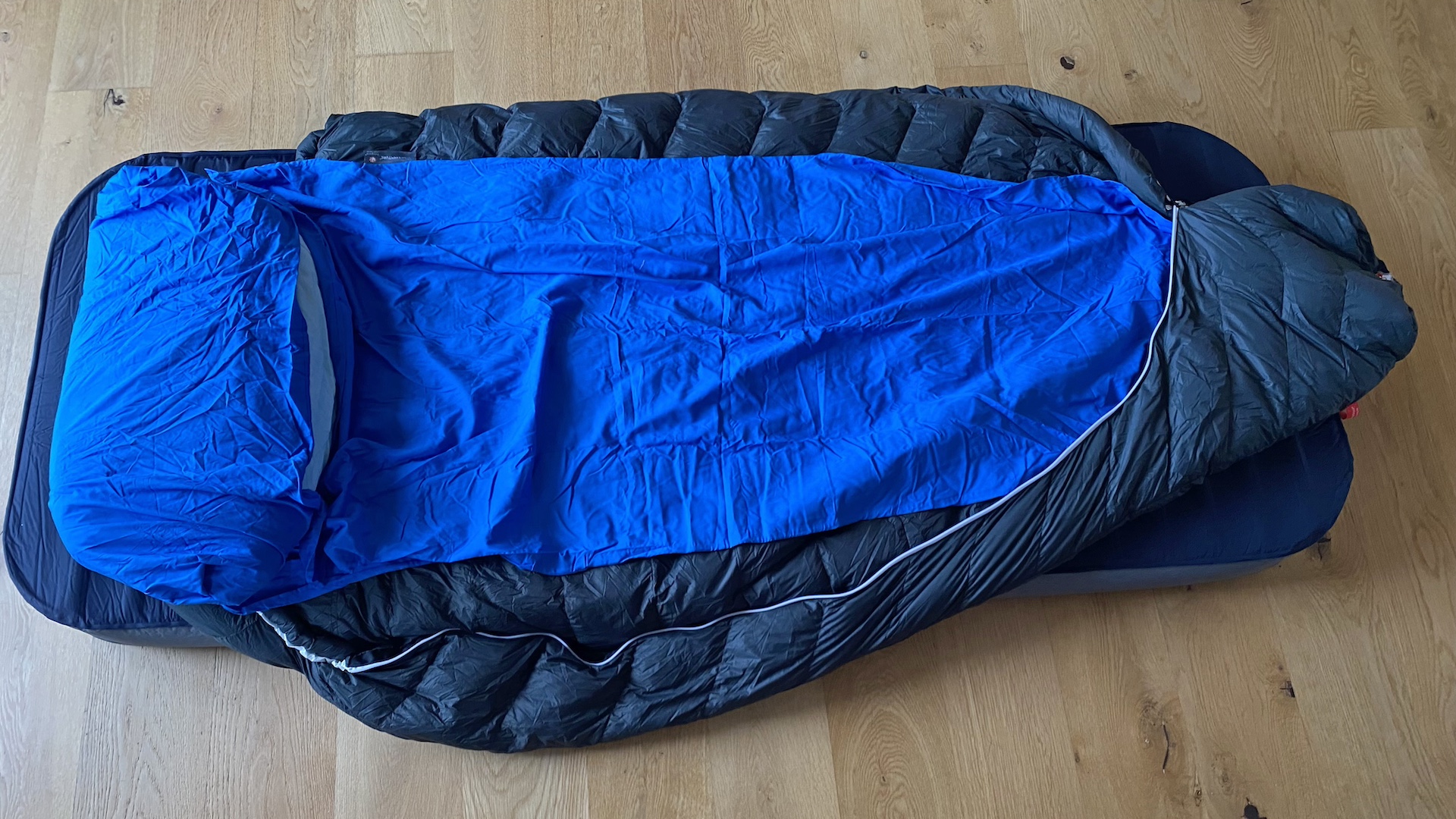
Made from cotton, this liner is available in both mummy and rectangle designs, so it can be used with pretty much any sleeping bag. But while there are two shapes to choose from, they each only come in one universal size, which people at the taller and smaller ends of the height spectrum may find inconvenient.
The design includes a pillow cover, which helps with hygiene and also keeps your sleeping setup together (if you’re prone to tossing and turning). It comes with its own ripstop stuff sack, which rolls and clips shut like a dry bag, and although it doesn’t promise to be waterproof, this is handy for keeping the liner clean and compact, and it has a hanging loop, which can be useful too.
The cotton used is standard (not organic) and it is dyed, so the liner does have a sizeable eco footprint. That said, the material has been treated with Polygiene, which means the liner has inbuilt antibacterial and odor-busting properties, so you won’t have to wash it too often (which is better for you and the environment). Being made from cotton, it’s easy to launder when you do decide it requires a refresh. It’s essential to make sure the liner stays dry on the trails because cotton has no thermal properties when damp.
Lifeventure Cotton Sleeping Bag Liner: in the field
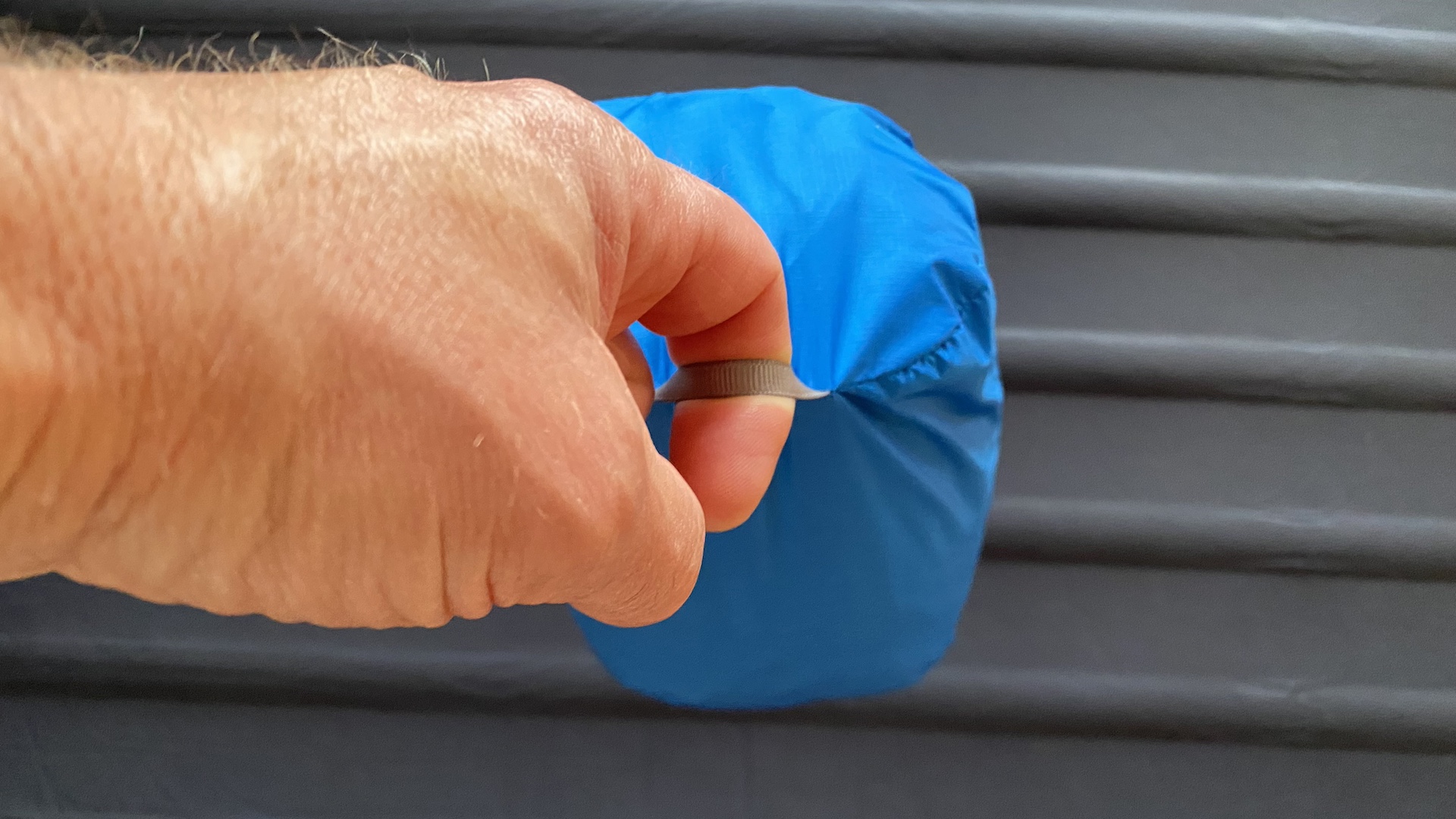
I’ve been using this liner while camping and traveling over the last few months, as a stand-alone sheet on balmy nights (when it really excelled) and as an extra layer as summer segued into fall and the outdoor temperatures rapidly dived. It has also come in very useful on some travel trips too.
It has helped keep me nice and snug on some cold nights (especially in those chilly pre-dawn hours). I love the fact that I can climb into this liner straight from the trail – with muddy legs – and my sleeping bag will stay pretty clean. It’s really easy to launder the liner, but washing sleeping bags is much more of a pain.
It isn’t the lightest liner on the market, but neither is it overly heavy, and the excellent, highly protective stuff sack makes it very easy to pack and carry. I find the integrated pillow case really useful, both for giving me peace of mind when traveling and using pillows that have had many heads on them before mine, and also for stuffing full of fleeces and puffer jackets when I’m lightweight camping and improvising a pillow. On occasions when I have taken a camping pillow with me, the integrated case is good for keeping the pillow in place in my sleeping bag.

Author of Caving, Canyoning, Coasteering…, a recently released book about all kinds of outdoor adventures around Britain, Pat has spent 20 years pursuing stories involving boots, bikes, boats, beers and bruises. En route he’s canoed Canada’s Yukon River, climbed Mont Blanc and Kilimanjaro, skied and mountain biked through the Norwegian Alps, run an ultra across the roof of Mauritius, and set short-lived records for trail-running Australia’s highest peaks and New Zealand’s Great Walks. He’s authored walking guides to Devon and Dorset, and once wrote a whole book about Toilets for Lonely Planet. Follow Pat’s escapades on Strava here and Instagram here.
